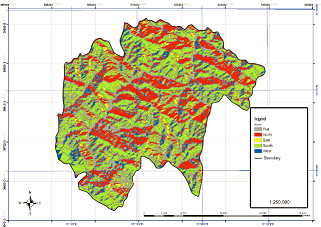Pick up pattern from logic fuzzy in mathematics for zonation of landslide hazard
Geophysics
DOI:
https://doi.org/10.14331/ijfps.2017.3300101Keywords:
Mathematical, Geology, Fuzzy Logic, Zonation, Landslide, Watershed, Tehran provinceAbstract
First landslide hazard zonation provided based on Fuzzy logic by landslide area laid on the Slope map, Geology( lithology) map, Aspect map. Then, these maps classes of priority and coming next determine based on existing landslides area in the geology, slope, and aspect of maps. In the geology map of tuff, shale, and conglomerate rocks, about with hectare 1440.43 (about percent 23.94) and shelly limestone about with hectare 0.88 (about percent 0.01) and in the slope map, X>45 classes about with hectare 2794 (about percent 46.44 ) and 15-25 classes about with hectare 737 ( about percent 12.25) and in the aspect map, East classes with about hectare 1882 ( about percent 31.28) and west classes with hectare 579 (about percent 9.62) sequential have most and least landslide area. Then, in the final drawer to dimension centimeters 2 in the regional watershed management of the map and we counted from 0 until 863 based on geology, slope, and aspect that exist the only unit 624 counted from 0 until 623. Then (y) units settled sequential, numbers 0 to 105 in very low sensitivity class (one class), numbers 106 to 207 in low sensitivity class (two-class), numbers 208 to 345 in average sensitivity class (three class), numbers 346 to 498 in high sensitivity class (four class) and numbers 499 to 623. then landslide hazard zonation provided base on Fuzzy logic.
Downloads

Published
How to Cite
Issue
Section
License
Copyright (c) 2020 International Journal of Fundamental Physical Science

This work is licensed under a Creative Commons Attribution 4.0 International License.










